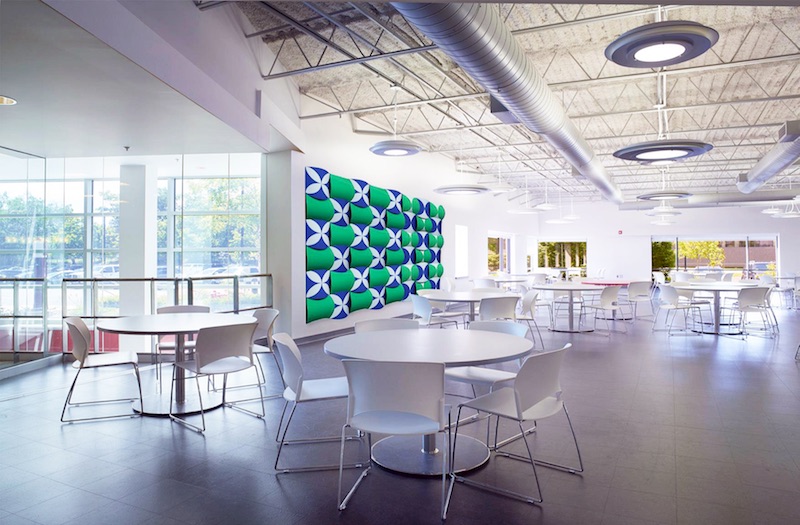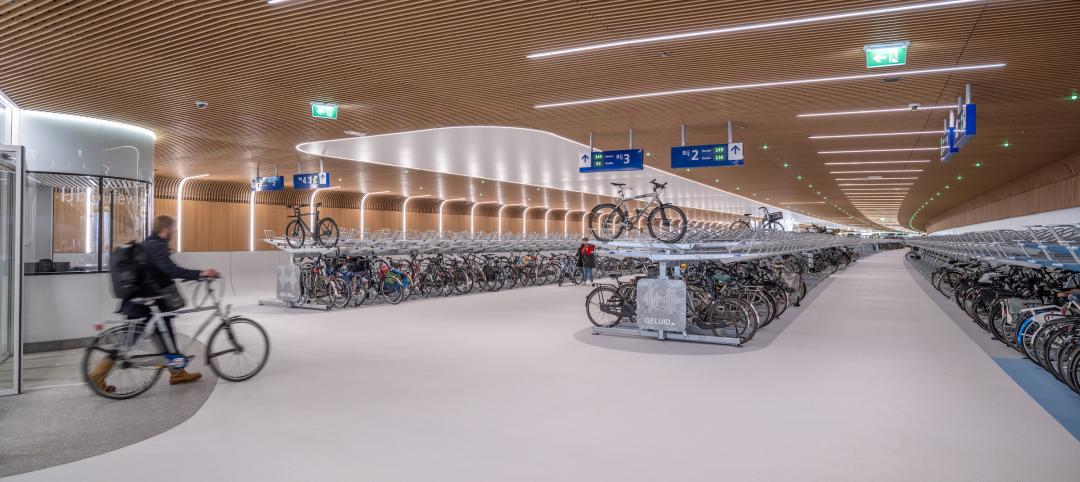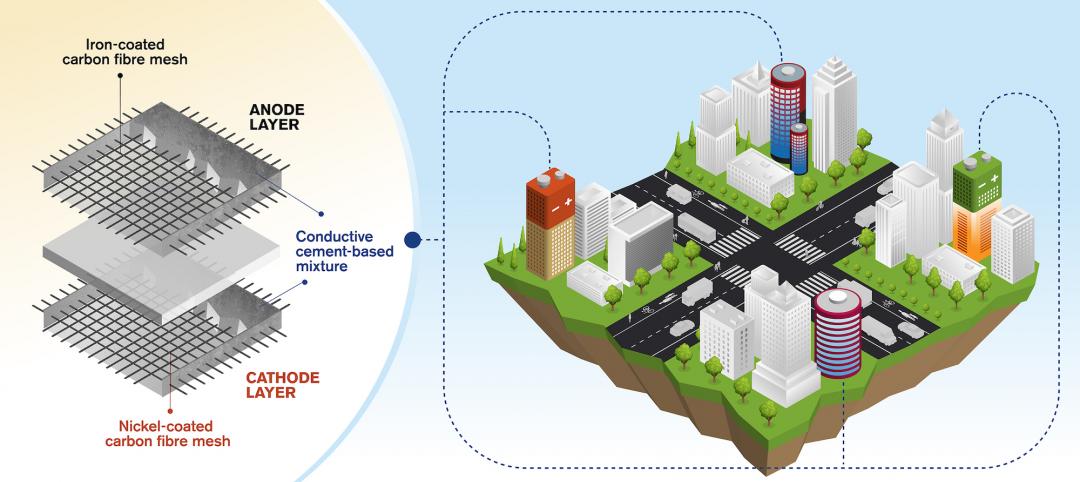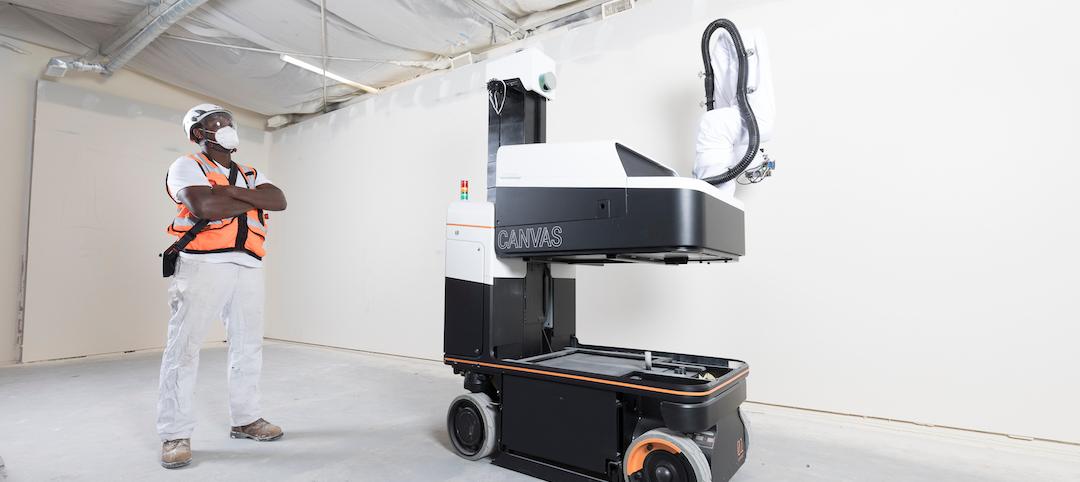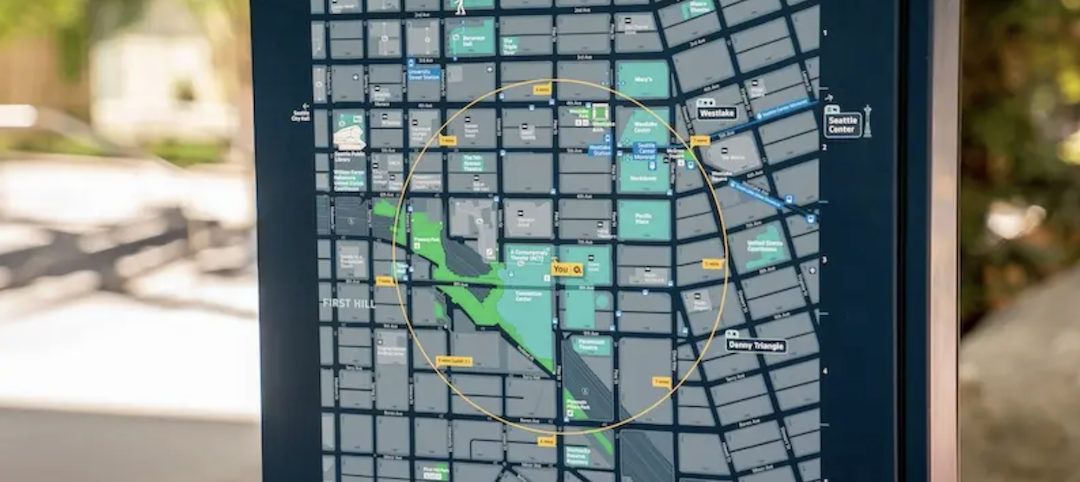When it comes to the building of the future, every material used in construction needs to pull its weight. For a building to become as sustainable, environmentally friendly, and as comfortable as possible, there can be no slackers on the materials front.
Take the newest offering from E Ink. Using the same E Ink bi-stable ink technology found in its current line of eReaders and wearables and integrating it with traditional architectural materials, E Ink Prism creates a new way for commercial spaces such as large hotel lobbies, office complexes, and airports to change the aesthetics of the space without resorting to a large LCD or LED screen—and the light pollution and higher energy demands that come with it.
E Ink Prism has a paint-like appearance and a wide-ranging compatibility with various materials and shapes that make it highly suitable for architectural applications. E Ink Prism comes in seven different colors—Voyage (dark blue), Daydream (cyan), Blush (red), Sprout (green), Zest (yellow), Harvest (brown) and Waltz (black)—and can be sized to be compatible with most configurations, patterns, and materials.
The film can be programmed to dynamically switch colors in nearly any pattern, shape, speed, and sequence. During these visual changes, E Ink Prism only requires ultra-low power and never requires the use of electrical outlets. The film does not provide any illumination and, as with paint, its visibility is based on ambient light.
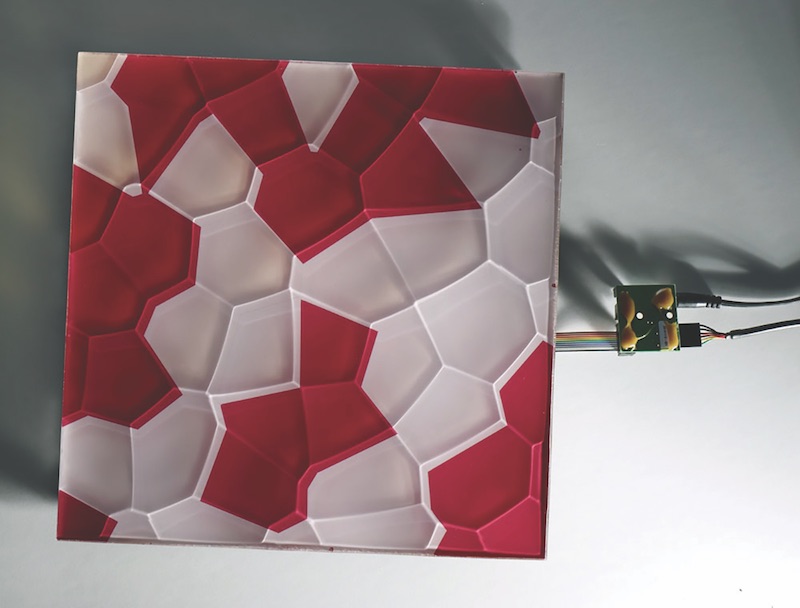 Courtesy of E Ink.
Courtesy of E Ink.
Recent developments are beginning to point to a much more utilitarian future for paint. Researchers at RMIT University, Melbourne, have developed a paint that can absorb water vapor and use solar energy to split it and generate hydrogen. Hydrogen, which is often referred to as the cleanest source of energy, can be used in fuel cells or in conventional combustion engines as an alternative to fossil fuels.
The paint contains synthetic molybdenum sulfide, a new material that acts as a semiconductor and catalyses the splitting of water atoms into hydrogen and oxygen, according to RMIT. All that is needed for the paint to produce fuel is solar energy and moist air.
Applied to a brick wall of a building, the paint instantly converts the wall into an energy-harvesting, fuel-production space. Areas with humid climates provide ideal applications for the paint. But its developers say the material can also be used in applications in very dry, hot climates near oceans. As the seawater is evaporated, the paint will absorb the vapor and produce fuel.
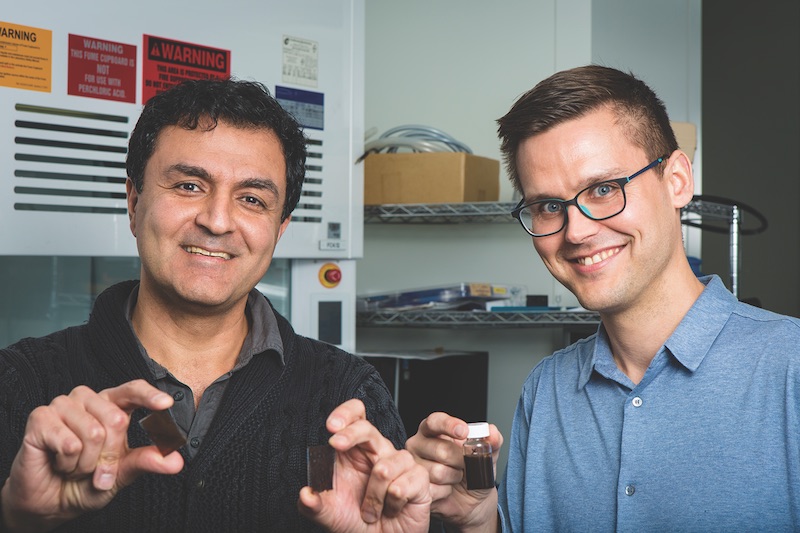 Courtesy of RMIT University.
Courtesy of RMIT University.
Related Stories
Cladding and Facade Systems | Apr 5, 2023
Façade innovation: University of Stuttgart tests a ‘saturated building skin’ for lessening heat islands
HydroSKIN is a façade made with textiles that stores rainwater and uses it later to cool hot building exteriors. The façade innovation consists of an external, multilayered 3D textile that acts as a water collector and evaporator.
Transportation & Parking Facilities | Mar 23, 2023
Amsterdam debuts underwater bicycle parking facility that can accommodate over 4,000 bikes
In February, Amsterdam saw the opening of a new underwater bicycle parking facility. Located in the heart of the city—next to Amsterdam Central Station and under the river IJ (Amsterdam’s waterfront)—the facility, dubbed IJboulevard, has parking spots for over 4,000 bicycles, freeing up space on the street.
Concrete | Jan 24, 2023
Researchers investigate ancient Roman concrete to make durable, lower carbon mortar
Researchers have turned to an ancient Roman concrete recipe to develop more durable concrete that lasts for centuries and can potentially reduce the carbon impact of the built environment.
Sponsored | Resiliency | Dec 14, 2022
Flood protection: What building owners need to know to protect their properties
This course from Walter P Moore examines numerous flood protection approaches and building owner needs before delving into the flood protection process. Determining the flood resilience of a property can provide a good understanding of risk associated costs.
Giants 400 | Nov 14, 2022
4 emerging trends from BD+C's 2022 Giants 400 Report
Regenerative design, cognitive health, and jobsite robotics highlight the top trends from the 519 design and construction firms that participated in BD+C's 2022 Giants 400 Report.
AEC Tech | Apr 13, 2022
A robot automates elevator installation
Schindler—which manufactures and installs elevators, escalators, and moving walkways—has created a robot called R.I.S.E. (robotic installation system for elevators) to help install lifts in high-rise buildings.
AEC Tech Innovation | Mar 9, 2022
Meet Emerge: WSP USA's new AEC tech incubator
Pooja Jain, WSP’s VP-Strategic Innovation, discusses the pilot programs her firm’s new incubator, Emerge, has initiated with four tech startup companies. Jain speaks with BD+C's John Caulfield about the four AEC tech firms to join Cohort 1 of the firm’s incubator.
Great Solutions | Jan 18, 2022
Researchers develop concept for rechargeable cement-based batteries
Researchers from the Department of Architecture and Civil Engineering at Chalmers University of Technology in Gothenburg, Sweden, have created a concept for rechargeable batteries made of cement. The concept involves a cement-based mixture with small amounts of short carbon fibers added to increase conductivity and flexural toughness.
Great Solutions | Nov 22, 2021
Drywall robots take the risk out of the finishing process
Canvas is using robots to complement the work already being done by drywall professionals.
Great Solutions | Sep 23, 2021
Seattle looks to become America’s most walkable city with a new citywide wayfinding system
Seamless Seattle will support the Seattle Department of Transportation’s commitment to increase the percentage of trips made by walking to 35% by 2035.


